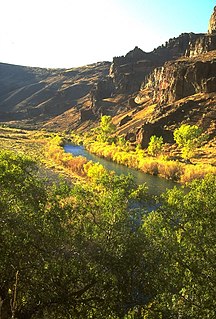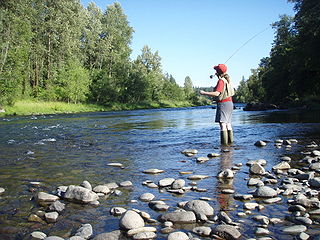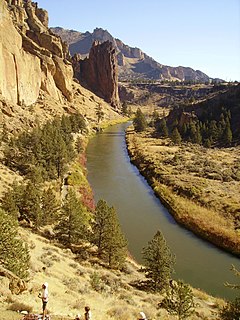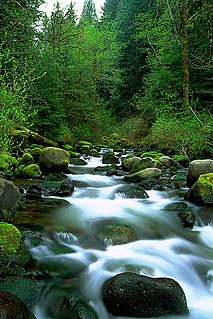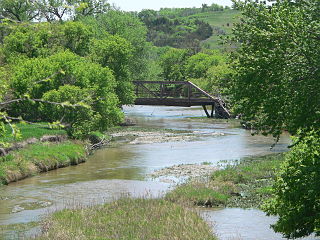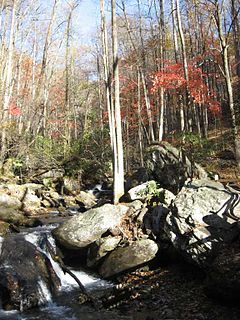| Dry Creek | |
| Country | United States |
|---|---|
| State | Oregon |
| County | Malheur |
| Source | |
| - location | near Five Points |
| - elevation | 5,000 ft (1,524 m) [1] |
| - coordinates | 42°30′31″N117°17′44″W / 42.50861°N 117.29556°W [2] |
| Mouth | Crooked Creek |
| - location | near Burns Junction |
| - elevation | 3,570 ft (1,088 m) [2] |
| - coordinates | 42°47′42″N117°44′47″W / 42.79500°N 117.74639°W Coordinates: 42°47′42″N117°44′47″W / 42.79500°N 117.74639°W [2] |
| Length | 54 mi (87 km) [3] |
| Basin | 299 sq mi (774 km2) [4] |
Dry Creek is a tributary, 54 miles (87 km) long, of Crooked Creek in the U.S. state of Oregon. [3] The creek, which is intermittent, begins in the desert near Five Points in Malheur County. [5] It joins Crooked Creek east of Burns Junction and about 7 miles (11 km) south of the larger stream's confluence with the Owyhee River. [6] Dry Creek drains a basin of about 299 square miles (770 km2). [4]
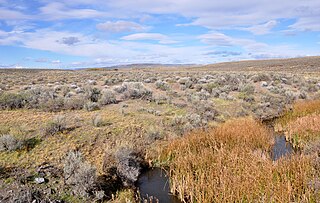
Crooked Creek is a 51-mile (82 km) tributary of the Owyhee River in the U.S. state of Oregon. The source of Crooked Creek is at an elevation of 3,921 feet (1,195 m) at Crooked Creek Spring, while the mouth is at an elevation of 3,343 feet (1,019 m) near Rome. Crooked Creek has a 1,340-square-mile (3,500 km2) watershed.

Oregon is a state in the Pacific Northwest region on the West Coast of the United States. The Columbia River delineates much of Oregon's northern boundary with Washington, while the Snake River delineates much of its eastern boundary with Idaho. The parallel 42° north delineates the southern boundary with California and Nevada. Oregon is one of only three states of the contiguous United States to have a coastline on the Pacific Ocean.

Malheur County is a county in the southeast corner of the U.S. state of Oregon. As of the 2010 census, the population was 31,313. Its county seat is Vale, and its largest city is Ontario. The county was named after the Malheur River, which runs through the county. "Malheur" is French for misfortune or tragedy.
Forming northeast of Five Points, Dry Creek flows north, then west, across Squaw Flat in southern Malheur County near the border with the U.S. state of Nevada. Near Garlow Butte, Coyote Creek enters from the left, and near Caviatta Ridge, Peacock Creek enters from the left. West of Caviatta Ridge, the creek turns north and receives Corbin Creek from the right. Dry Creek flows through Blevins Reservoir and then Rockhouse Reservoir before turning west again and receiving Indian Fort Creek from the right. Turning north, it joins Crooked Creek just south of U.S. Route 95 about halfway between Burns Junction and Rome. [5] [6]
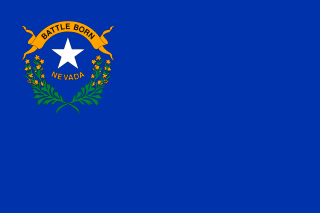
Nevada is a state in the Western United States. It is bordered by Oregon to the northwest, Idaho to the northeast, California to the west, Arizona to the southeast and Utah to the east. Nevada is the 7th most extensive, the 32nd most populous, but the 9th least densely populated of the U.S. states. Nearly three-quarters of Nevada's people live in Clark County, which contains the Las Vegas–Paradise metropolitan area where three of the state's four largest incorporated cities are located. Nevada's capital, however, is Carson City.

U.S. Route 95 (US 95) is a north–south U.S. highway in the western United States. Unlike many other US highways, it has not seen deletion or replacement on most of its length by an encroaching Interstate highway corridor, due to its mostly rural course. Because of this, it still travels from border to border and is a primary north–south highway in both Nevada and Idaho. This is one of the only US Routes or Interstate highways to cross from Mexico to Canada.

Rome, also called Rome Station after its sole business, is an unincorporated community in Malheur County, Oregon, United States. It is part of the Ontario, OR–ID Micropolitan Statistical Area. In the sparsely populated high desert of southeastern Oregon, Rome is immediately west of the Owyhee River on U.S. Route 95, approximately 12 miles (19 km) northeast of Burns Junction. Jordan Creek enters the river slightly downstream of Rome. The elevation of Rome is 3,390 feet (1,033 m) above sea level.
Coyote Creek, which has an undefined basin, is about 6 miles (10 km) long. [3] Peacock Creek is about 11 miles (18 km) long [3] and drains a basin of about 41 square miles (110 km2). [4] Corbin Creek is about 15 miles (24 km) long; [3] its basin covers roughly 38 square miles (98 km2). [4] Indian Fort Creek, which flows through Scott Reservoir, is about 24 miles (39 km) long, [3] and it drains a watershed of about 47 square miles (120 km2). [4]


